�
Graduate Texts in Mathematics
261
Editorial Board
S. Axler
K.A. Ribet
For other titles in this series, go to
http://www.springer.com/series/136
�
Erhan C¸ ınlar
Probability and Stochastics
ABC
�
Erhan C¸ ınlar
Princeton University
328 Sherrerd Hall
Princeton, NJ 08544
USA
ecinlar@princeton.edu
Editorial Board:
S. Axler
San Francisco State University
Mathematics Department
San Francisco, CA 94132
USA
axler@sfsu.edu
K. A. Ribet
University of California at Berkeley
Mathematics Department
Berkeley, CA 94720
USA
ribet@math.berkeley.edu
ISSN 0072-5285
ISBN 978-0-387-87858-4
DOI 10.1007/978-0-387-87859-1
Springer New York Dordrecht Heidelberg London
e-ISBN 978-0-387-87859-1
Library of Congress Control Number: 2011921929
Mathematics Subject Classification (2010): 60
c Springer Science+Business Media, LLC 2011
All rights reserved. This work may not be translated or copied in whole or in part without the written
permission of the publisher (Springer Science+Business Media, LLC, 233 Spring Street, New York,
NY 10013, USA), except for brief excerpts in connection with reviews or scholarly analysis. Use in
connection with any form of information storage and retrieval, electronic adaptation, computer software,
or by similar or dissimilar methodology now known or hereafter developed is forbidden.
The use in this publication of trade names, trademarks, service marks, and similar terms, even if they are
not identified as such, is not to be taken as an expression of opinion as to whether or not they are subject
to proprietary rights.
Printed on acid-free paper
Springer is part of Springer Science+Business Media (www.springer.com)
�
Preface
This is an introduction to the modern theory of probability and stochas-
tic processes. The aim is to enable the student to have access to the many
excellent research monographs in the literature. It might be regarded as an
updated version of the textbooks by Breiman, Chung, and Neveu, just to
name three.
The book is based on the lecture notes for a two-semester course which I
have offered for many years. The course is fairly popular and attracts grad-
uate students in engineering, economics, physics, and mathematics, and a
few overachieving undergraduates. Most of the students had familiarity with
elementary probability, but it was safer to introduce each concept carefully
and in a uniform style.
As Martin Barlow put it once, mathematics attracts us because the need
to memorize is minimal. So, only the more fundamental facts are labeled as
theorems; they are worth memorizing. Most other results are put as propo-
sitions, comments, or exercises. Also put as exercises are results that can be
understood only by doing the tedious work necessary. I believe in the Chinese
proverb: I hear, I forget; I see, I remember; I do, I know.
I have been considerate: I do not assume that the reader will go through
the book line by line from the beginning to the end. Some things are re-
called or re-introduced when they are needed. In each chapter or section, the
essential material is put first, technical material is put toward the end. Sub-
headings are used to introduce the subjects and results; the reader should
have a quick overview by flipping the pages and reading the headings.
The style and coverage is geared toward the theory of stochastic processes,
but with some attention to the applications. The reader will find many in-
stances where the gist of the problem is introduced in practical, everyday
language, and then is made precise in mathematical form. Conversely, many
a theoretical point is re-stated in heuristic terms in order to develop the
intuition and to provide some experience in stochastic modeling.
The first four chapters are on the classical probability theory: random
variables, expectations, conditional expectations, independence, and the clas-
sical limit theorems. This is more or less the minimum required in a course
at graduate level probability. There follow chapters on martingales, Poisson
random measures, L´evy processes, Brownian motion, and Markov processes.
v
�
vi
Preface
The first chapter is a review of measure and integration. The treatment
is in tune with the modern literature on probability and stochastic pro-
cesses. The second chapter introduces probability spaces as special measure
spaces, but with an entirely different emotional effect; sigma-algebras are
equated to bodies of information, and measurability to determinability by
the given information. Chapter III is on convergence; it is routinely classi-
cal; it goes through the definitions of different modes of convergence, their
connections to each other, and the classical limit theorems. Chapter IV is
on conditional expectations as estimates given some information, as projec-
tion operators, and as Radon-Nikodym derivatives. Also in this chapter is
the construction of probability spaces using conditional probabilities as the
initial data.
Martingales are introduced in Chapter V in the form initiated by P.-A.
Meyer, except that the treatment of continuous martingales seems to contain
an improvement, achieved through the introduction of a “Doob martingale”,
a stopped martingale that is uniformly integrable. Also in this chapter are two
great theorems: martingale characterization of Brownian motion due to L´evy
and the martingale characterization of Poisson process due to Watanabe.
Poisson random measures are developed in Chapter VI with some care.
The treatment is from the point of view of their uses in the study of point
processes, discontinuous martingales, Markov processes with jumps, and, es-
pecially, of L´evy processes. As the modern theory pays more attention to
processes with jumps, this chapter should fulfill an important need. Various
uses of them occur in the remaining three chapters.
Chapter VII is on L´evy processes. They are treated as additive processes
just as L´evy and Itˆo thought of them. Itˆo-L´evy decomposition is presented
fully, by following Itˆo’s method, thus laying bare the roles of Brownian motion
and Poisson random measures in the structure of L´evy processes and, with a
little extra thought, the structure of most Markov processes. Subordination
of processes and the hitting times of subordinators are given extra attention.
Chapter VIII on Brownian motion is mostly on the standard material:
hitting times, the maximum process, local times, and excursions. Poisson
random measures are used to clarify the structure of local times and Itˆo’s
characterization of excursions. Also, Bessel processes and some other Markov
processes related to Brownian motion are introduced; they help explain the
recurrence properties of Brownian motion, and they become examples for the
Markov processes to be introduced in the last chapter.
Chapter IX is the last, on Markov processes. Itˆo diffusions and jump-
diffusions are introduced via stochastic integral equations, thus displaying the
process as an integral path in a field of L´evy processes. For such processes, we
derive the classical relationships between martingales, generators, resolvents,
and transition functions, thus introducing the analytic theory of them. Then
we re-introduce Markov processes in the modern setting and explain, for Hunt
processes, the meaning and implications of the strong Markov property and
quasi-left-continuity.
�
Preface
vii
Over the years, I have acquired indebtedness to many students for their
enthusiastic search for errors in the manuscript. In particular, Semih Sezer
and Yury Polyanskiy were helpful with corrections and improved proofs. The
manuscript was formatted by Emmanuel Sharef in his junior year, and Willie
Wong typed the first six chapters during his junior and senior years. Siu-
Tang Leung typed the seventh chapter, free of charge, out of sheer kindness.
Evan Papageorgiou prepared the figures on Brownian motion and managed
the latex files for me. Finally, Springer has shown much patience as I missed
deadline after deadline, and the staff there did an excellent job with the
production. Many thanks to all.
�
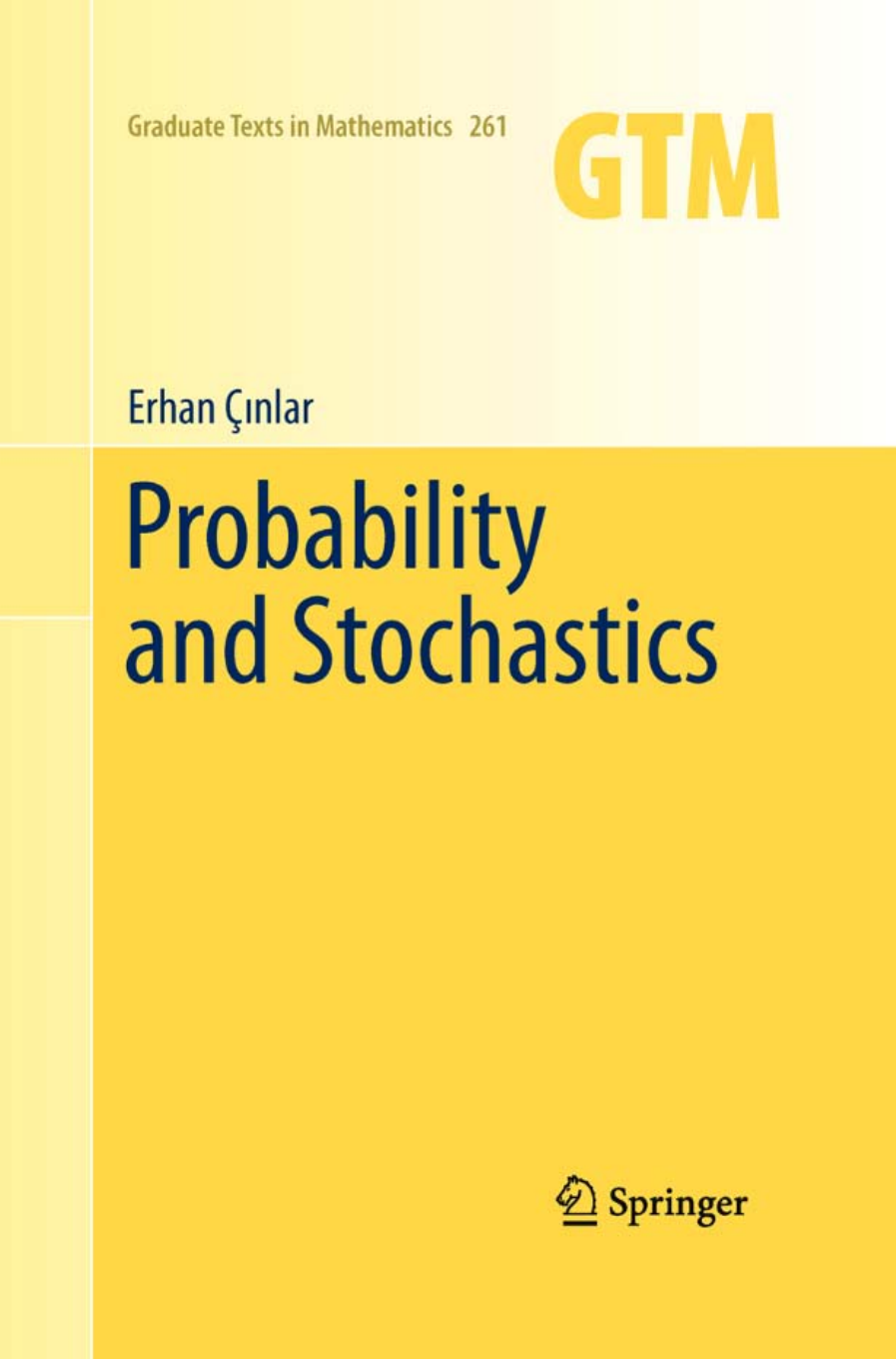
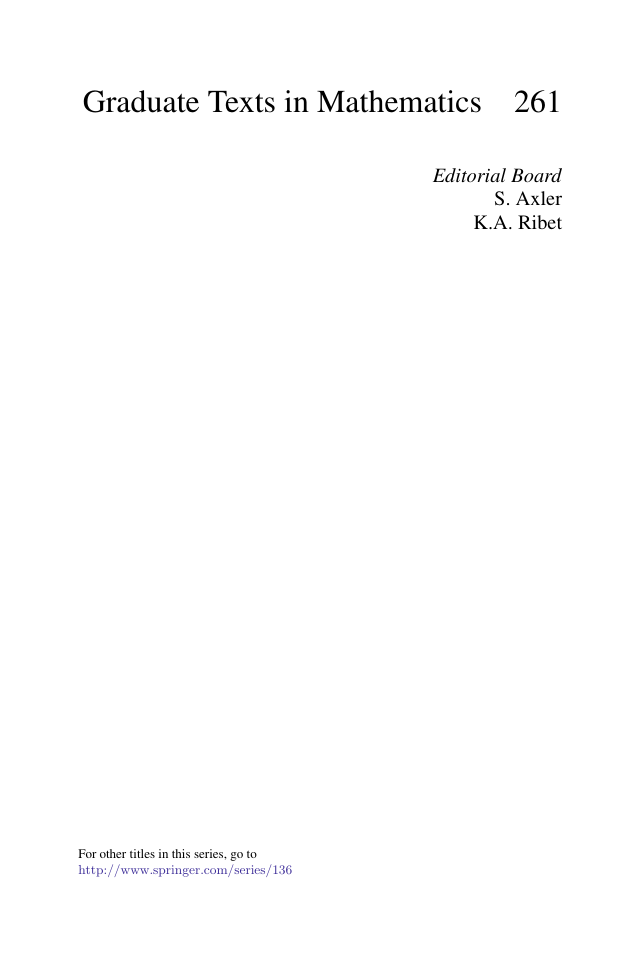

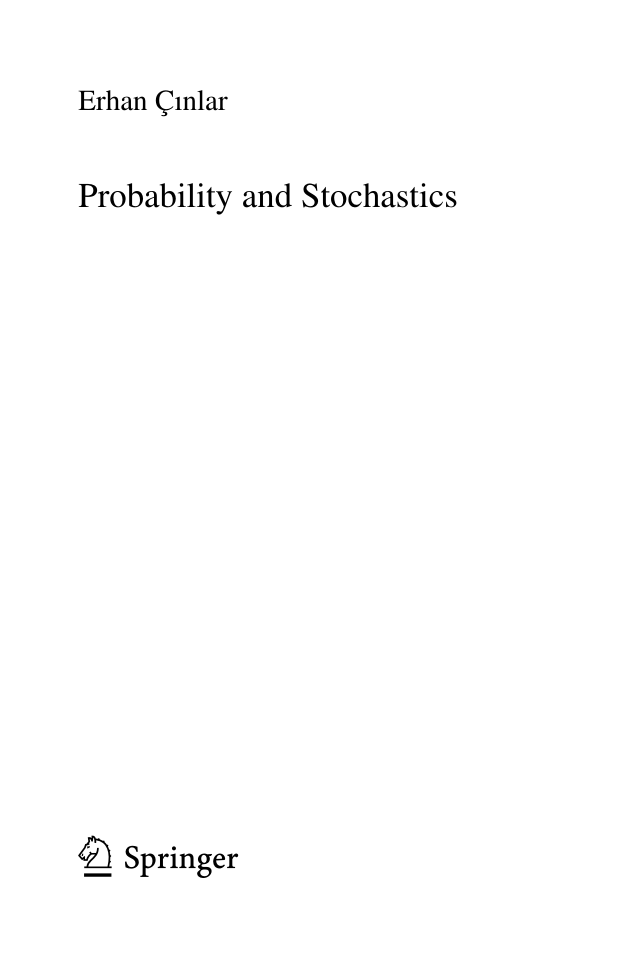
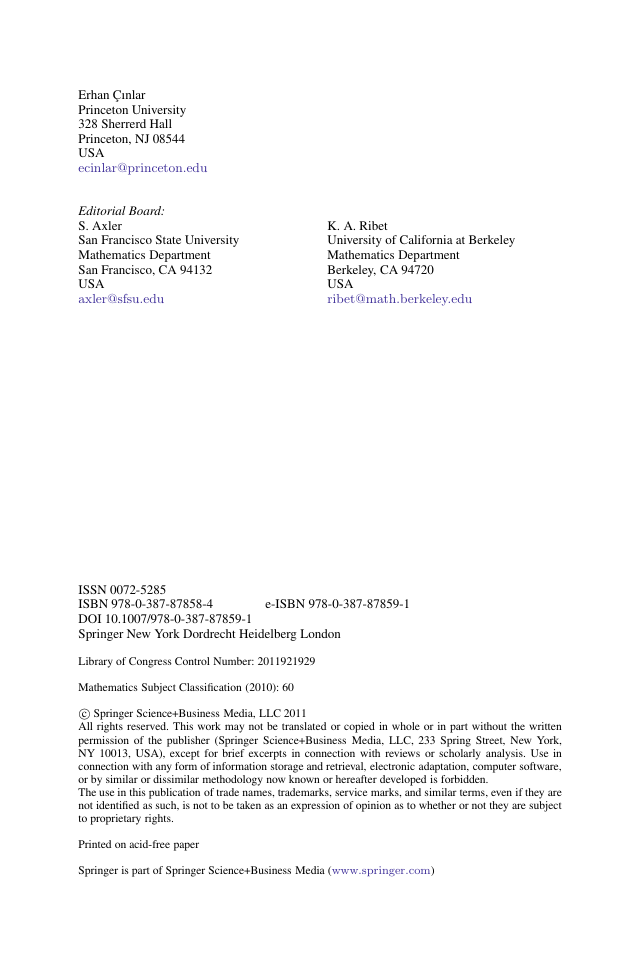
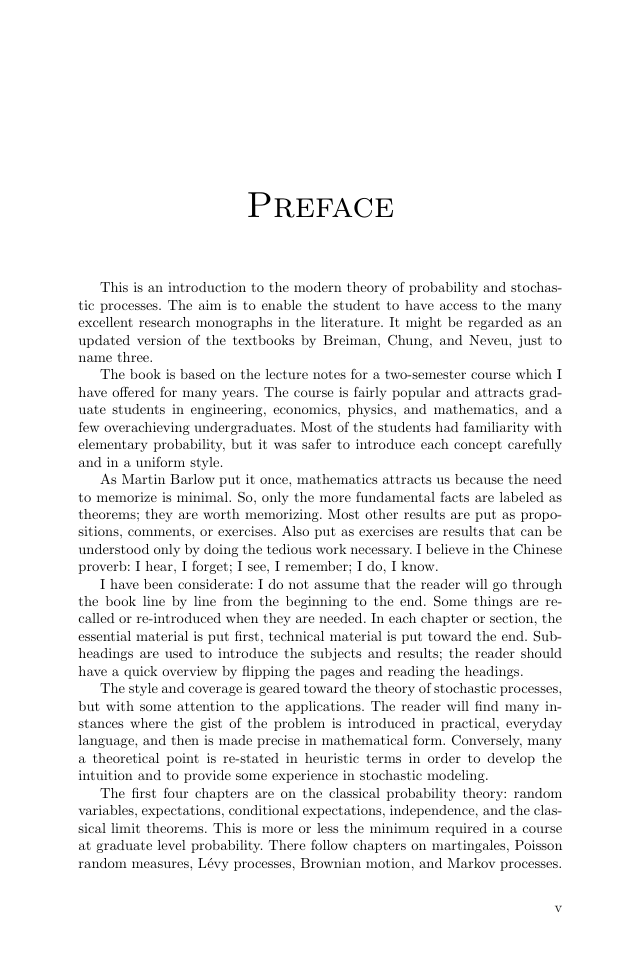
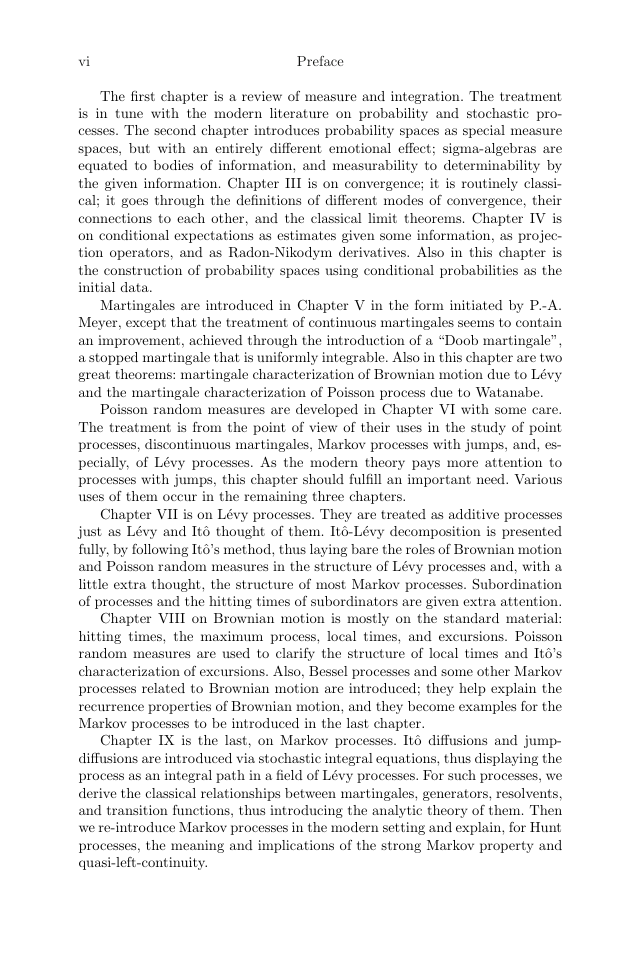









 2023年江西萍乡中考道德与法治真题及答案.doc
2023年江西萍乡中考道德与法治真题及答案.doc 2012年重庆南川中考生物真题及答案.doc
2012年重庆南川中考生物真题及答案.doc 2013年江西师范大学地理学综合及文艺理论基础考研真题.doc
2013年江西师范大学地理学综合及文艺理论基础考研真题.doc 2020年四川甘孜小升初语文真题及答案I卷.doc
2020年四川甘孜小升初语文真题及答案I卷.doc 2020年注册岩土工程师专业基础考试真题及答案.doc
2020年注册岩土工程师专业基础考试真题及答案.doc 2023-2024学年福建省厦门市九年级上学期数学月考试题及答案.doc
2023-2024学年福建省厦门市九年级上学期数学月考试题及答案.doc 2021-2022学年辽宁省沈阳市大东区九年级上学期语文期末试题及答案.doc
2021-2022学年辽宁省沈阳市大东区九年级上学期语文期末试题及答案.doc 2022-2023学年北京东城区初三第一学期物理期末试卷及答案.doc
2022-2023学年北京东城区初三第一学期物理期末试卷及答案.doc 2018上半年江西教师资格初中地理学科知识与教学能力真题及答案.doc
2018上半年江西教师资格初中地理学科知识与教学能力真题及答案.doc 2012年河北国家公务员申论考试真题及答案-省级.doc
2012年河北国家公务员申论考试真题及答案-省级.doc 2020-2021学年江苏省扬州市江都区邵樊片九年级上学期数学第一次质量检测试题及答案.doc
2020-2021学年江苏省扬州市江都区邵樊片九年级上学期数学第一次质量检测试题及答案.doc 2022下半年黑龙江教师资格证中学综合素质真题及答案.doc
2022下半年黑龙江教师资格证中学综合素质真题及答案.doc